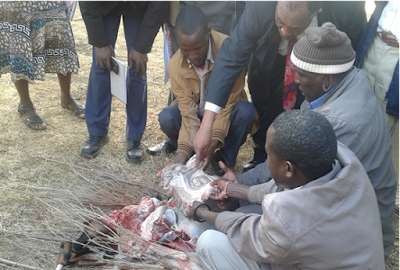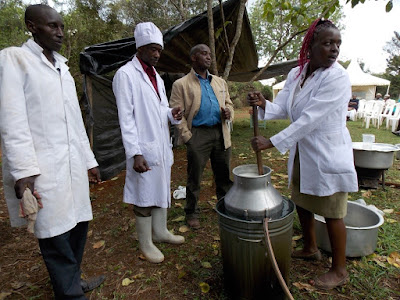By Bob Aston
The Agricultural Sector
Development Support Programme (ASDSP) on February 24-25, 2016 at Nyaki Hotel in
Nyahururu, Laikipia West Sub County held a Social protection linkage forum
between financial service providers and 60 women groups drawn from maize,
dairy, sheep, and goat value chains.
Among the financial
institutions present included Women Enterprise Fund, Uwezo Fund, Equity Bank,
Laikipia County Enterprise Fund, and Faulu Bank.
Speaking while opening
the forum, Hon. Anne Chumo, Laikipia CEC Trade, Tourism and Enterprise
Development thanked the financial institutions and ASDSP for organizing the forum.
| Hon. Anne Chumo addressing the women drawn from various farmer groups |
She noted that the forum
would come up with various interventions that would overcome the challenges
faced by women farmers. She called on financial institutions to come up with
services that are easily accessible to women.
“As women we should stop
fearing applying for loans. We can only prosper when we seek for financial
services without fear of defaulting,” said Hon. Chumo.
She urged women to avoid
procrastinating but instead seek for timely interventions when faced with
challenges. She said that the County government is working towards empowering women
by ensuring that they benefit through the County Enterprise Fund.
Mr. Nyapola Atenya, ASDSP-Laikipia
Environmental Resilience and Social Inclusion officer noted that social
protection aims at ensuring that all communities live in dignity and are able
to use their capabilities for their own social and economic development.
He noted that social
protection services reduce risks and vulnerability and can improve
productivity. He said that few women are involved in decision making in the
three prioritized ASDSP value chains.
The workshop looked at
financial products accessible to women and major investment opportunities along
the maize, dairy, sheep, and goat value chains.
“Helping women to invest
in production, processing, mechanization, input supplies, research, and extension
can ensure that women play an active role in the three value chains,” said Mr.
Nyapola.
The women noted that inadequate knowledge, lack of access to information, inadequate capital, lack of access to market, fear of defaulting, low confidence, and lack of surety are major constraints affecting them in the County.
The women noted that inadequate knowledge, lack of access to information, inadequate capital, lack of access to market, fear of defaulting, low confidence, and lack of surety are major constraints affecting them in the County.



